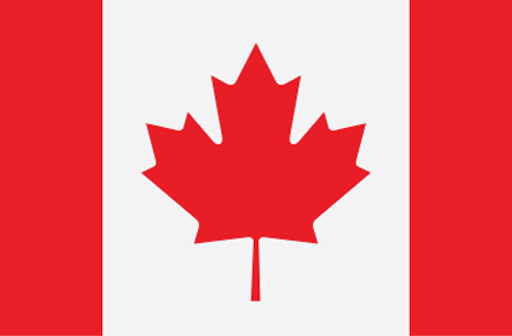How can a 3-ply mask help you?
How can a 3-ply mask help you?
The emergence of the Coronavirus pandemic has made the 3-ply surgical mask the most demanded, with many buying whatever quality of masks they can get. However, the quality of varying labels comes in many different designs and classifications too; though the masks may have the same outlook. A procedure mask or surgical mask is purposed to be used by health workers during various health care routines or during surgical operations to seize microbes launched in aerosols and liquid droplets from the wearer's nose and mouth. Surgical masks are made from other non-woven material and paper and should be thrown away after each use. The surgical masks are usually made in three layers. The three-layer material is made with a non-woven material with a melt-blown material put in between. The melt-blown material is the filter that stops microbes from penetrating or going out of the mask; most surgical masks have folds or pleats. However, surgical masks are not built to safeguard the wearer from inhaling airborne bacteria or virus specks and cannot be compared to respirators in any way as they are built specifically for this purpose.
Definition of a Surgical Mask
A surgical mask is a medical gadget controlled by the FDA whilst the procedural mask is a common issue mask not particularly classified for healthcare procedures, but alternatively, regularly used to minimize breathing in and transmission of air pollutants. It can also be said that surgical masks are coverings for the mouth and nose of the user that offers a physical blockade to granular materials and fluids.

Definition of a Medical Mask
According to the American Society of Testing and Materials, all “medical masks” are categorized. The standard set for face masks by ASTM is in three categories ASTM Level 1, ASTM Level 2, and ASTM Level 3. The crucial variation amongst the three categories is the level of defense against higher pressure liquid or liquid splashes. The level three masks category of the ASTM provides the highest level of defense from liquid saturation while also having better bacterial and speck blocking material than the lower categories.
Medical Definition of a Face Mask
A face mask is a gadget that provides a covering for the mouth and nose of the user, and might not meet filtration or fluid barrier standard. This includes cloth face masks as a supplementary category. It may be single or multiple uses; and if it is for multiple uses, it can be washed or cleaned.
Surgical masks are the most common facemasks; however, the major differences are: ordinary face masks are not used to avert infectious diseases but a surgical mask is supposed to have a bacteria filtration capacity of a minimum of 80% whilst, a conventional face mask could be made up of between one to three layers of pleated or folded material often made from cotton or paper material but a “surgical mask” is compulsorily made of polypropylene in three- layers.
Putting into consideration the existing face mask options, there is practically no face mask with a 100% filtration capability of microscopic viruses. Though the majority of masks are built for filtering granular microbes, the Coronaviruses are tiny.
As a vivid explanation, a floating speck of dust in a light ray is around 50 micron; at that size, the speck of dust is still about five hundred times larger than the viruses that cause the Coronavirus.

On the contrary, a HEPA filter should catch at least 99.97% of microbes at 0.3 microns in size. So also in comparison here, the N95 masks are considered to be not as effective as HEPA filters because an N95 mask catches only 95% of 0.3-micron microbes. To a few, the variant between 95% catch and 99.97% might seem insignificant, but a single sneeze could speculatively consist of 40,000 aerosol droplets that are within the range of 0.5–12 μm in diameter. So, in essence, if a sneeze may produce 40,000 droplets; then one droplet may contain 3,000 droplet nuclei
Therefore, 40,000 droplets x 3,000 virus Nuclei = 120,000,000
So, if we study the speculative filtration of a single sneeze containing viral droplets it means that: 99.97% filtration rate will have 36,000 virus nuclei remains; while 98% filtration rate will have 2.4 million virus nuclei remains; and 95% filtration rate will have 6 million virus nuclei remains
(Note that the filtration rates not altered for target particle size hence should not be considered a metric for actual virus load or mask efficacy)
Scientists published the first casual testing of cloth face masks In 2015, discovered that the Vietnam hospital workers were thirteen times more probable t to come down with a flu-like ailment when making use of a cloth mask instead of a disposable surgical one.
Sizes and filtration of viral droplets
Droplet release from infected persons are very much researched, however, it is crucial to carefully study data, as some persons are referred to as “super-spreaders”. For instance, the breathing rate, the number of droplets, the air exchange rate, and also the surrounding circumstances will affect the workability and distance for carriers. Droplets of ( >5 μm) are inclined to stay confined in the upper respiratory tract, which is the throat and nose regions; and droplets of (≤5 μm) have the probability of being inhaled into the lower respiratory tract, that is the alveoli and bronchi in the lungs.
In divergence, the term ‘droplet nuclei’ refers to droplets of (≤5 μm) in diameter; and such can remain floating in the air for a notable length of time, giving them enough time to be transmitted over distances (>1 m) (Stetzenbach, Buttner & Cruz, 2004; Wong & Leung, 2004).
According to (Barker, Stevens & Bloomfield, 2001) the real size dispersal of droplets is dependent on variables, such as the thickness of the fluid, the emitted air momentum, and the flow track; that is through the mouth, nose or both.
Effectiveness of the 3 layered mask
In the first instance, surgical face masks were not structured to safeguard wearers from the surroundings. The actual purpose of the masks was to safeguard patients from wound infection coming from a healthcare worker. It was endorsed later as a precautionary procedure for healthcare workers. However, more current research, published in April 2020 by Nature Medicine, indicates that surgical masks are remarkably essential in decreasing visible viral loads.







Leave a comment